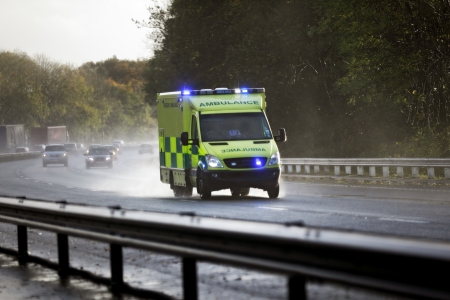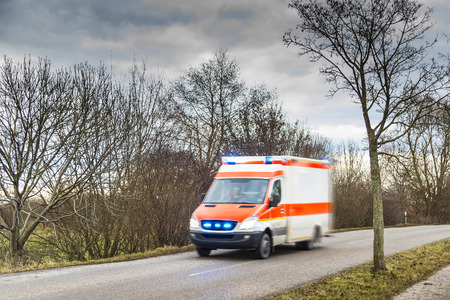It is easy to overcome that situation when an emergency vehicle approaches you – especially if the driver only takes the vehicle at the last minute.
If your first reaction is that the sound of the siren is too close, check the mirrors as you have learned. If you hear the sirens in the distance, look around, do not wait until they get there. Observe the way in the mirror, look for the blue-red flashing lights and look at safe stops when needed.
When an emergency vehicle arrives near you, the first reaction may be braking, but this can cause problems if there is not enough free space. Instead, look for a safe option, a place where you can slow down or stop.
So what do you do in such a situation?
Slow down and avoid sudden maneuvers
Help emergency vehicles and other road users by clearly indicating that you will pull out. Make sure that you don’t make the situation worse by this. For example, if you enter a subway or a side road, check the mirrors to make sure that the emergency vehicle don’t want to pass through this entrance. Avoid stopping in places where an emergency car is difficult to pass – such as a mountain top or a bend.
Pull slowly and safely to the right and allow the vehicle to pass through on the left side. Check if there is no other emergency vehicle nearby. Then go back to driving, but be vigilant.

Is it legally compulsory to release emergency vehicles?
No, there is no legal obligation to do so. However, road traffic regulations require that you have to help such vehicles way and you have to take the right steps to emergency vehicles can move on while you are not breaking the other traffic rules.
In other words, you must pay attention to emergency cars, but if you only can help with the violation of the traffic rules, you do not have to do it.
Which vehicles are included here?
- police
- ambulance
- firefighters
- national security vehicles
These vehicles can use flashing blue light or sirens, but only when there is an emergency or when they go to the emergency scene. Due to the flashing blue light, they are exempt from normal road traffic rules, including stop at red lights, go on the right side of the road, and keep speed limit.
Emergency cars and driving situations
– motorway
Emergency cars are in trouble if all the highway-lines are busy, so do not move permanently in the inner lane and do not obstruct them. If you see it approaching, pull out into an exterior line and wait for the passage of the vehicle. Be careful, because there may be more than one such vehicle coming in. This can easily lead to traffic accidents.
– accident site
Do not slow down unnecessarily when passing through an accident site (for example, if there is an accident on the other side of the road). It can easily cause an accident when you slow down and see what happened.
– one way road
In this situation, it is appropriate to continue the journey at a reasonable speed so the emergency car can follow you as long as it you can’t pull out safely and securely.
– hill or blind bend
Do not stand on top of the hill or in blind bends. This could jeopardize the driver of an emergency vehicle.

– hospitals – fire stations
Do not get stuck in front of them because you can prevent them in starting.
– parking or standing emergency vehicles
If you see that an emergency vehicle is standing, slow down and move carefully next to it. Take care of the obstacles or the other drivers.
– road connections
All road users must assure the free way of the emergency vehicle from all directions until it crosses the intersection. Never close the node.
– at traffic lights
You should give the priority to them.
But generally, it is not a good idea to accelerate or go through the red in order to give way – this will endanger other road users.
– red light
You may stop at the red light and there is an emergency car behind you who wants to go straight on, but his path is closed because of you. Because of the red light can’t legitimately move forward. You must legally wait until the lamp turns green and then you can move on and pull safely as possible.
– bus bands
The same rules apply to red lights. If you are driving in a bus band to release an emergency vehicle, you can impose a fine on us.
In summary
- Stay calm
- Do not make sudden decisions
- Look for a safe place where you can pull off
- Observe the rules of safe driving and legal regulation
- Keep in mind that the drivers of the emergency vehicles are highly skilled professionals – they cope with every situation, but you need to help them: the best you can do is stay calm and avoid panic decisions.
- It is forbidden to overtake emergency vehicles.
